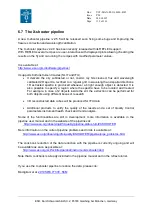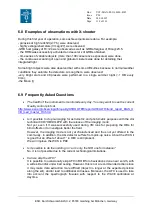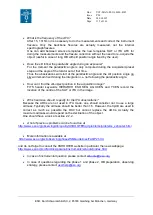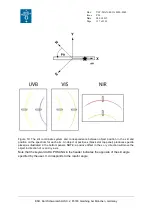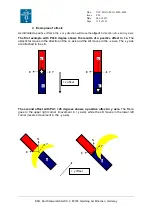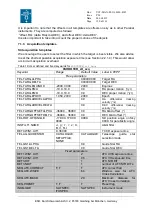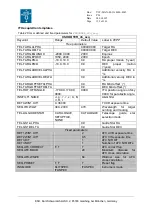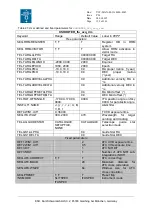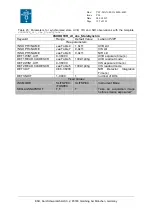
Doc:
Issue
Date
Page
VLT-MAN-ESO-14650-4942
P96
24.06.2015
112 of 161
ESO, Karl-Schwarzschild-Str. 2, 85748 Garching bei München, Germany
6.6.2 Absolute flux calibration
Spectrophotometric standard stars can be used to obtain the absolute efficiency of the
instrument and derive an absolute flux calibration of the science data. These observations
are done by the Observatory with the wide 5.0” slit with dedicated templates
XSHOOTER_slt_cal_StandardStar
and
XSHOOTER_ifu_cal_StandardStar
.
The use of the 5” is better in order to obtain most of the flux of the specphot standard star.
Starting from P88, the spectrophotometric standard stars will be observed in nodding mode
with a new specific template.
The classical set of UV-optical standard stars from Oke (1990, AJ 99, 1621) and Hamuy et
al. (1994, PASP 106, 566) do not cover the whole spectral range of X-shooter thus making
calibration of full spectral range of X-shooter problematic. To remedy this situation dedicated
2 years observing campaign has been undertaken as an ESO Observatory Programme (
PID
278.D-5008
) to extend to the near-IR a subset of 12 standard stars from the two references
cited above to the near-IR. Tabulated fluxes used by the pipeline for those 12 stars from 300
to 2500 nm allow an absolute flux calibration to the 5-10%. Details of this programme can be
found in Vernet et al. (Proc. SPIE 7016, 2008, available on the X-shooter web pages).
Currently 7 spectrophotometric standard stars are available and are fully flux calibrated, see
http://www.eso.org/sci/facilities/paranal/instruments/xshooter/tools/specphot_list.html
a HST standard star was found to be a spectroscopic binary and is
now observed only if no other suitable star can be observed.
If you use the fluxes available in the X-shooter pipeline, please cite:
Vernet, Kerber, Mainieri et al. 2010, Highlights of Astronomy, Volume 15, p. 535-535
Hamuy et al. 1994, PASP, 106, 566.
However, with disabled ADCs the flux calibration cannot be as good as it was with enabled
ADCs. We therefore recommend to the users to use as much as possible the parallactic
angle, to avoid long OBs and to take into accounts some possible flux losses (which vay
depending on the observations).
















